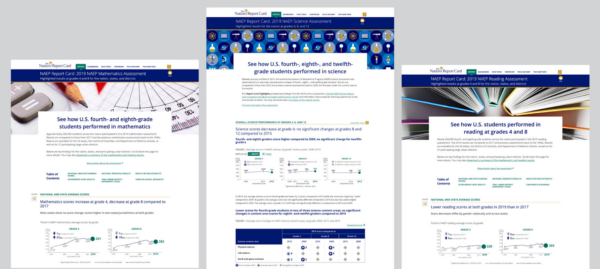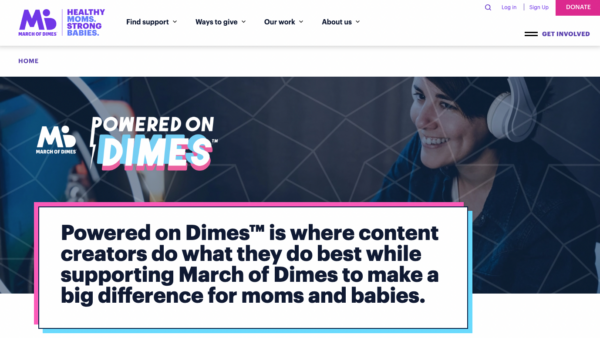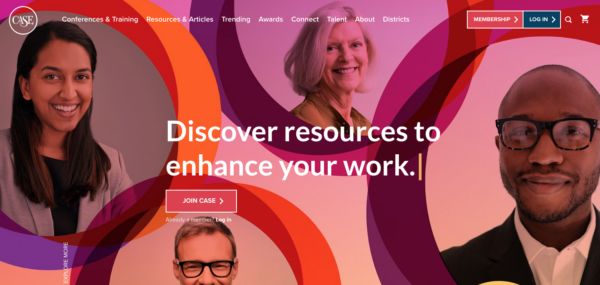Blog Insights
Is Your Digital Strategy Ready for 2023?
We’re continuing to explore the ideas sparked at the Digital Impact Summit this fall when we were joined by more than 200 leaders and doers from the nonprofit and public sectors who shared what’s working and what’s not within their organizations and their digital strategy.
In addition to the overarching theme of “unleashing curiosity for change,” we heard a lot about how the pandemic drove so much experimentation for most, if not all, mission-driven organizations. And how many of you are working hard to incorporate more of that spirit of experimentation into your organization’s lasting culture, not just as a necessary response to a global pandemic.
As we enter the month of November, many of us are in full-on planning mode for whatever 2023 may throw at us. How do we bring this spirit of experimentation with us into our planning discussions and processes?
As you think about 2023, ask yourself: “is our suite of digital tools and strategies best meeting our audiences’ needs and our organization’s goals? And how can we build experimentation into our 2023 plan to improve the efficacy of services, experiences, products, features and outreach campaigns?”
There are three primary areas we recommend auditing to best assess opportunities for digital growth: Communications and awareness, end-to-end brand experiences, and the digital “back office”
Communications and awareness
Are we reaching our partners, donors, users, stakeholders, and others where they already are in meaningful ways that drive them to engage with and/or use our resources and services? And are we utilizing lessons from the commercial sector to ensure we have an effective omnichannel marketing strategy?
Case in point: The Nation’s Report Card

The National Assessment of Educational Progress (NAEP), a U.S. Department of Education program, assesses students around the country on educational outcomes and reports the results to a wide set of stakeholders, including policymakers, education officials, and the media. Also known as The Nation’s Report Card, NAEP has provided meaningful data to help improve education policy and practice across the country since 1969. In 2021, Forum One worked with Educational Testing Services (ETS), NAEP, and the Department of Education’s Institute of Education Services (IES) to rapidly develop and launch the very first School Survey Dashboard, a go-to resource for trusted, accurate and comprehensive data on school reopenings and the impact of COVID-19 on American students to inform a safe return to in-person learning and promote educational equality. The Dashboard, developed quickly in response to urgent needs, was created with the end user in mind to help ensure easy access to the necessary data required to make these essential decisions for students and communities across the country.
End-to-end brand experiences
How is a user’s experience with our organization once they become aware of us and have decided to engage? Is it easy for them to access and actually use our services and resources? If they have questions about or problems with our services, can they easily get answers and/or support? Do we make it easy for them to re-engage with our organization at key points of need? Do we make it as easy as possible for potential donors to support our work?
During the Digital Impact Summit, we heard from a number of mission-driven organizations about innovative ways they are approaching fundraising with younger, more diverse donors, including adding cryptocurrency and non fungible tokens as ways to support, and online gaming-based fundraising.
Case in point: March of Dimes

March of Dimes recently launched a Livestream Brand—Powered on Dimes™—in an effort to make it easier for digital communities to support its mission and drive action in the maternal and infant health crisis. For an 85 year-old organization looking to speak to more and broader audiences, March of Dimes has taken a holistic data- and audience-centered approach to rethinking and redesigning how it engages with its audiences online, and the livestream brand is just one example of this.
The digital “back office”
Finally, do we have all the necessary internal tools to effectively manage the end-to-end brand experience? And are we automating as much of this work as possible? Necessary internal tools may include a CRM, analytics tools, CMS, survey tools, finance and accounting programs, internal collaboration tools, and others. Having a clear sense of how all of your back-end digital tools and platforms are (or aren’t!) connected is an important step in ensuring you have the right tools in your toolbox to reach your 2023 goals.
Case in point: the Council for the Advancement and Support of Education

The Council for the Advancement and Support of Education (CASE), is a membership organization providing events, research, and guides for its thousands of members. When the pandemic forced many events online, and when members were spending more time turning to the website for resources, CASE deployed a chatbot to answer FAQs and guide users through registration processes and the hundreds of materials available online. CASE went beyond the basics of chatbots by creating a brand-aligned character, Casey, a wombat good at “digging up information” to make the automation feel personal and connected to the organization’s mission.
Asking yourself these core questions as you look forward to 2023 will help identify some potential new areas to increase efficacy, and ultimately, impact. Thank you again to everyone who joined us at the Digital Impact Summit this fall. We look forward to continued conversations with this community, learning from each other, and supporting those working to further their impact in the mission-driven space.